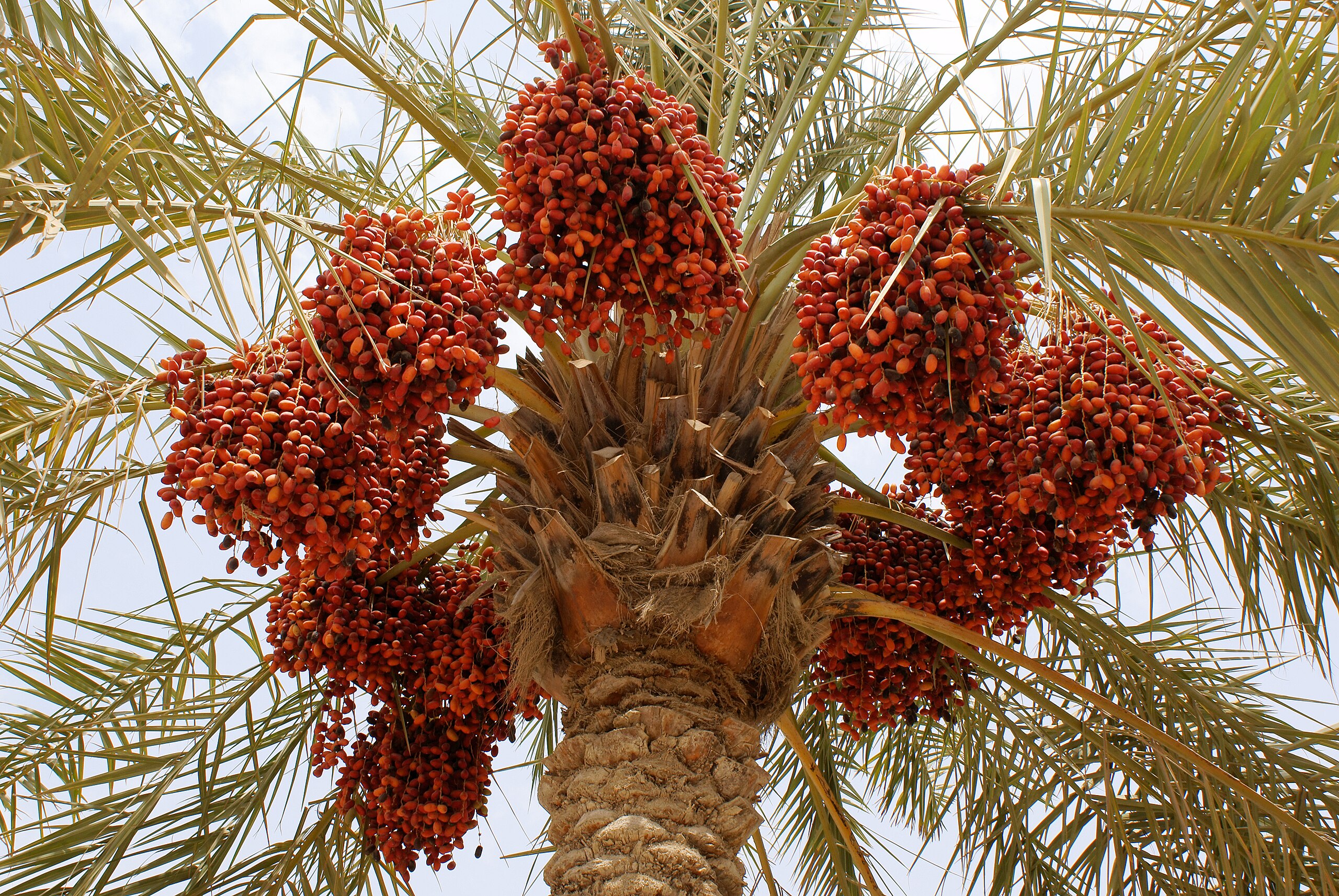
Pau Pámies Grácia, CC BY-SA 4.0
United Arab Emirates
Date Palm
(Phoenix Dactylifera)

Pau Pámies Grácia, CC BY-SA 4.0
General Description / Cultural Significance
The date palm (Phoenix dactillifera) is a large, majestic palm that has adorned the hot, arid landscape of the United Arab Emirates (UAE) for nearly 7,000 years. Seeing as the date palm has withstood such a brutally hot and dry climate, it’s no wonder the plant is often associated with tenacity, strength, and victory.
The UAE and many other Islamic countries hold date palms and their fruit in great esteem. During Ramadan, it is tradition that the daily fast ends with the consumption of a date—a fruit commonly used for many desserts during Ramadan. The Quran mentions dates 26 times, and the Prophet Mohammed was said to have eaten dates to sustain himself.
Once a year, the country puts on the Liwa Date festival with countless heritage events, a ‘best date fruit’ competition between Emirati farmers, and workshops that share expertise on the best way to grow and produce the highest quality dates. The local population is connected to the date palm not only as a part of their diet or livelihood but also is a beacon that highlights heritage and tradition.
Climate Change / Conservation Status
Date palm trees are resilient by design. They are capable of withstanding extremely high temperatures, thrive in sand rather than soil, and do not rely on a steady supply of water to keep them alive and healthy.
With over 40 million date palm trees in the UAE alone, conservation efforts are low-maintenance and low-stress. Furthermore, when date palms are cut down, they are used to their absolute entirety. The wood is typically used for construction, the leaves and fibers for hand-woven traditional handicrafts, and the fruit as a quick and hearty source of nutrients.
The growing number of date palm trees in and around the UAE is a glimpse of hope in sequestering rising carbon emissions, and the palm’s high magnitude of natural waste is said to be a promising source of biofuel. Additionally, date palms are believed to hold 15.8 tons of carbon emissions per hectare per year. While it seems to be a promising source of efficient energy, scientific projections suggest that by 2070, climate instability could affect date palm distribution.
Alternate Names
Sources
Abu Dhabi Culture. “Liwa Date Festival.” Abu Dhabi Culture, Department of Culture and Tourism, 18 Dec. 2018, abudhabiculture.ae/en/experience/heritage-festivals/liwa-date-festival.
Evans, Monica. “Will Dates Survive Climate Change?” #ThinkLandscape, Global Landscapes Forum, 6 Dec. 2023, thinklandscape.globallandscapesforum.org/62381/will-dates-survive-climate-change/#:~:text=The%20United%20Arab%20Emirates%20(U.A.E.,million%20in%20dates%20each%20year.
Office of the Ambassador, Permanent Mission of the United Arab Emirates to the United Nations. This country statement can be found on the World Sensorium original website.
“The Importance of Dates in the UAE.” Sheikh Mohammed Centre for Cultural Understanding, Sheikh Mohammed Centre for Cultural Understanding, 1 Sept. 2014, smccudubai.wordpress.com/2014/09/01/the-importance-of-dates-in-the-uae/#:~:text=Dates%20are%20mentioned%2026%20times,also%20holds%20special%20religious%20significance. Zacharias, Anna. “Can Abu Dhabi’s Palm Trees Help Combat Climate Change?” The National, The National News, 5 July 2021, www.thenationalnews.com/uae/environment/can-abu-dhabi-s-palm-trees-help-combat-climate-change-1.911401#:~:text=%22We%20found%20a%20lot%20%E2%80%93%20date,reduction%20and%20sequestration%20of%20carbon.%22.

